I choose to review this book for Mystery Thriller Week because I love travel fiction, art mysteries and thrillers. This is quite possibly the perfect combination of all three! Read my review of this brilliant novel and an article by the author, Tomasz Chrusciel, about the use of setting in fiction.
Fast Track to Glory by Tomasz Chrusciel
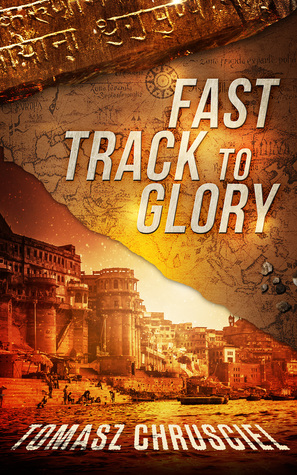 Fast Track to Glory by Tomasz Chrusciel is an exceptional around the world quest for knowledge. Technically, this brilliant novel is a thriller, though not quite like any other I’ve read.
Fast Track to Glory by Tomasz Chrusciel is an exceptional around the world quest for knowledge. Technically, this brilliant novel is a thriller, though not quite like any other I’ve read.
The story begins in Germany, before taking the reader on a whirlwind tour of Italy, Austria and India. Nina Monte, an Italian professor teaching at the History of Religions and the Ancient Worlds department in Padua, believes she’s been asked by the Italian Ministry of Culture to verify the authenticity of a relic recovered from a fifteenth-century shipwreck in Lake Garda. She’s consulted on antiquities cases before and has no reason to be suspicious of the request. She arrives at the Heidelburg Castle in Germany to examine this mysterious object, only to discover it has not yet been excavated from the maritime shipwreck. She’s sent to Italy to meet up with a member of the team responsible for recovering the artefact. When her contact person tries to kidnap then kill her, she realizes she’s been lured into a trap. But why?
The readers – alongside Nina – have to figure out why someone is prepared to murder and steal in order to obtain this relic, as well as discover the truth behind its alleged hidden powers. I’m going to have to stop describing the specific details of the story now for fear of spoiling any of the many plots twists in this book, which are what make it such an excellent and captivating read.
In the beginning of the novel, the villain seems to want the relic in order to achieve a higher spiritual power. During train, plane and automobile rides, the two main characters – Nina and Allessandro, a young hotelier from Malcesine and Nina’s unintentional partner on this journey – often discuss the implications of deciphering this relic’s supposed powers, within the context of spirituality, philosophy and religion.
I’m not a ‘new age’ type and the first few chapters, in which characters discuss the various interpretations of the relics true powers, had me concerned that this was going to get too spiritual for my tastes. I’m glad to say the author doesn’t overdo it. Rather, he uses the relic as a way of sharing various points of view and leaves it up to the reader to decide what to think, instead of shoving his perspective down your throat. Funny enough, the most popular highlighted passage in this book, according to my Kindle copy, is: “Every person wants to live in peace and abundance. What is different is the meaning of those things to each of us.”
Besides, the villain’s real reason for starting this quest is so smart and surprising down-to-earth, when it was finally revealed, I gained even more respect for the author.
Tomasz Chrusciel is a quite adept at misleading the reader. From the first page onwards, nothing is as it seems. In some books, this constant misdirection can be irritating. Yet in Fast Track to Glory, this technique works well, adding tension to the story and helping to keep the reader continually engaged with the plotline.
In contrast to most art history conspiracy novels, there are no long codes to decipher, a complex puzzle to solve or a lost language to learn; it’s more of a race to obtain the relic and then decipher it. Both the good and bad guys know who can read it; they just have to find that person.
It’s also unlike most thrillers and art conspiracy novels I’ve read, in that the spiritual quest and physical journey are almost more important to the story than the race to decode the artefact.
And what a quest it is. The author’s descriptions of architecture, people, manner of dress, landscapes, and even train stations, transport the reader to a series of beautiful and interesting locations. Once you get through with this book, you’ll be longing to pack your bags and visit the destinations the author so loving describes.
The many cities the characters visit are described in much more detail than your typical thriller or action-oriented novel, without slowing down the story or turning into a travelogue. These are tight and well-written, using all five senses to make each place come to life. You get the strong sense the author has spent time in all of the places he describes; his eye for detail is incredible.
Now onto our around the world journey. The story starts out at Heidelberg Castle before moving to Milan, Italy. There he paints a clear picture of the main square and the Duomo di Milano (the cathedral in Milan) in particular; the white and pink marble exterior, snap-happy tourists, religious iconography and stained glass windows.
Next stop is the gorgeous Northern Italian town of Malcesine on Lake Garda. In addition to describing the lovely villages that dot the wide lake, the author also provides an interesting account of a character’s dives among ship wrecks.
Then we are off to Innsbruck, Austria via train, where the white peaks of the Alps dominate the skyline. Old Town and its gothic and baroque facades, Court Church, the tombs of Emperor Maximilian I, cuckoo clocks, homemade liquors, and even the smells of the strudels are recounted.
Last stop, India, where the characters are immediately thrown into the hustle and bustle of Jaipur. The suburban metropolis is awash with overfull buses, slow-going lorries, tuk-tuks, bicycles, motorists, mobile snack bars, scooters, and pedestrians, all fighting for space on the narrow roadways the main characters travel on to reach their destination, the location of the person who can decipher the object.
As I already mentioned, the author uses the context of a religious relic to take the reader on a search for enlightenment, and the story aptly ends in Varanasi, India on the Ganges River during a festival of light. You can feel the water lapping at your feet, hear thousands of chanting worshippers and smell the burning incense mixed with body odor wafting through the air.
This is my favorite kind of novel, one that takes me on a mental journey and travel adventure simultaneously. It’s also a real page turner, for as much to see how the story develops as the desire to know where the author will take us next.
This smart, well-written and highly enjoyable story will entertain lovers of thrillers, art conspiracy novels, and travel fiction alike. I highly recommend it.
5 out of 5 stars
Over to Tomasz for TripFiction’s #TalkingLocationWith.… feature
How wonderful the world in which we live is, and the best part about it is travelling. When I’m away, I’m always on the lookout for fascinating historical settings and events that can later be weaved into a new thrilling story. This was exactly what happened in Malcesine, Italy, when I was visiting the local castle. An exhibition about the history of Lake Garda and the region around it showed the backbreaking venture of transporting one-hundred-ton galleys over the Alps and then the battle on the lake in 1439. This is how my latest novel, “Fast Track to Glory”, was born.

I must admit, since that journey, Lake Garda has been one of my favourite places in Europe, perhaps even in the entire world. Especially Monte Baldo, a two-thousand-metre-high mountain overlooking the lake. It has a magnificent view of the mighty Alps. Being there was for me a peaceful and spiritual experience. Later, I just had to set one of the scenes in the book there. Without question, there could be no better place for a tranquil, concluding scene.
There’s no doubt that a captivating setting in novels is a crucial factor to the success of a story, regardless of whether it’s travel fiction, romance or horror. For me, the easiest way to create the world I put my characters into are exactly my own travels – it’s so natural to write about familiar places, and it makes my work more enjoyable. When I write, it’s like being in those beautiful towns or mountains again, and also looking at them through someone else’s eyes. Sometimes it’s challenging to put aside my own experience when, for example, although I loved a city or a temple, my protagonist didn’t seem to notice all those amazing details I admired. Or the other way around; on very few occasions when I’m not particularly amazed by the place I visit, one of my characters would still love it.
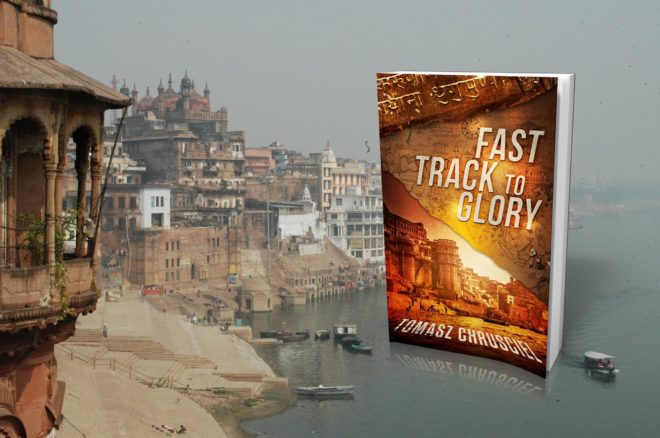
The more people in a book differ from each other, the more their stories benefit. They create a kaleidoscope of entirely different points of view, like pictures of the same square taken from various angles.
I will always find it truly fascinating to move around the world in search of new story ideas. I believe there’s an infinite number of them waiting to be explored, especially for authors in the historical thriller genre.
A skillful writer can use setting to convey every possible feeling and to put readers in every possible frame of mind. It’s like music in a movie. It sets the mood instantly, and you know where you are. When reading about a gloomy, windy night and a house in a gruesome forest, you will cuddle up with your pillow and check if all the doors and windows are locked. When reading about a glorious sunrise, about someone being born amidst the cacophony of birds tweeting, you know it’s the beginning of an incredible adventure, and you will pour yourself a glass of wine, let your body relax, and forget about the whole world around you.
A reader who sees magnificent buildings through the pages of a novel, who smells exquisite dishes in a restaurant, or whose stomach grumbles when reading about phenomenal street food; who hears clatters in a street market or the sound of a raindrop falling on a car window; and who feels the heat in their gut because a great secret has just been revealed, that reader is a genuinely happy reader. Then the writer knows that the setting in their book does exactly what it should do – it pulls everyone into the world of fiction and makes it real.
Thank you so much to Tomasz for sharing his thoughts on travel and writing….
You can follow Tomasz on Twitter, Facebook and connect via his website. Buy his book here.
This review and Talking Location article was first featured on TripFiction’s blog.
If you love to travel by book, you need to check out their fabulous selection of titles, categorized by country. Connect with the TripFiction Team via Twitter (@tripfiction), Facebook (TripFiction), Instagram (TripFiction) and Pinterest (TripFiction) and now YouTube.
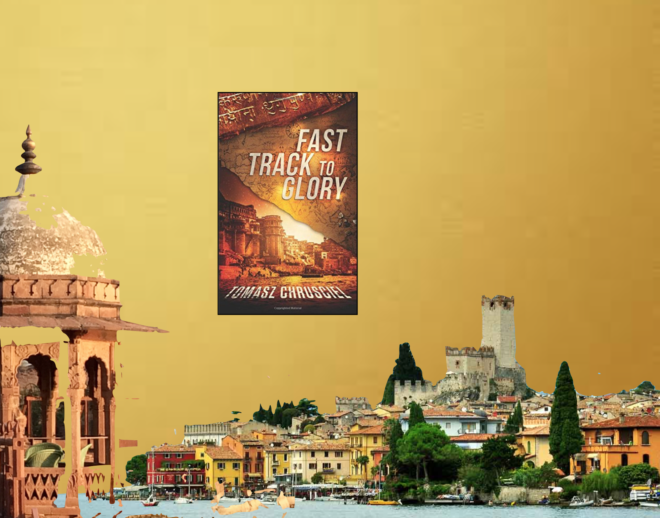
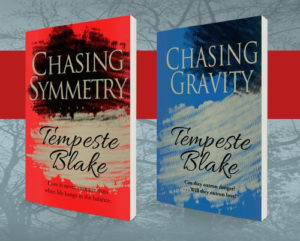
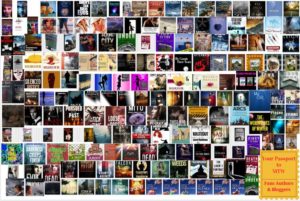
Pingback: Spotlight On… – Jennifer S. Alderson